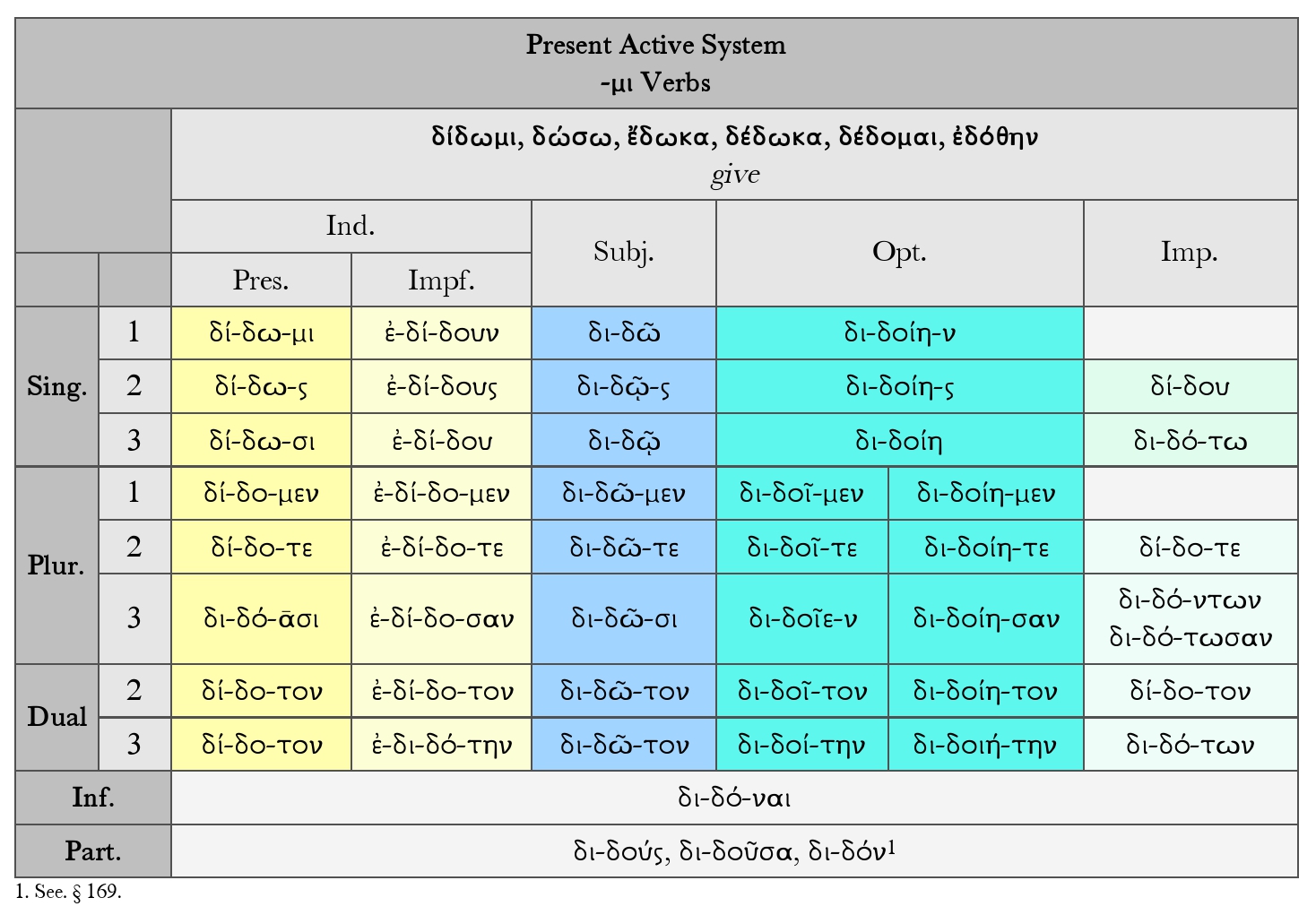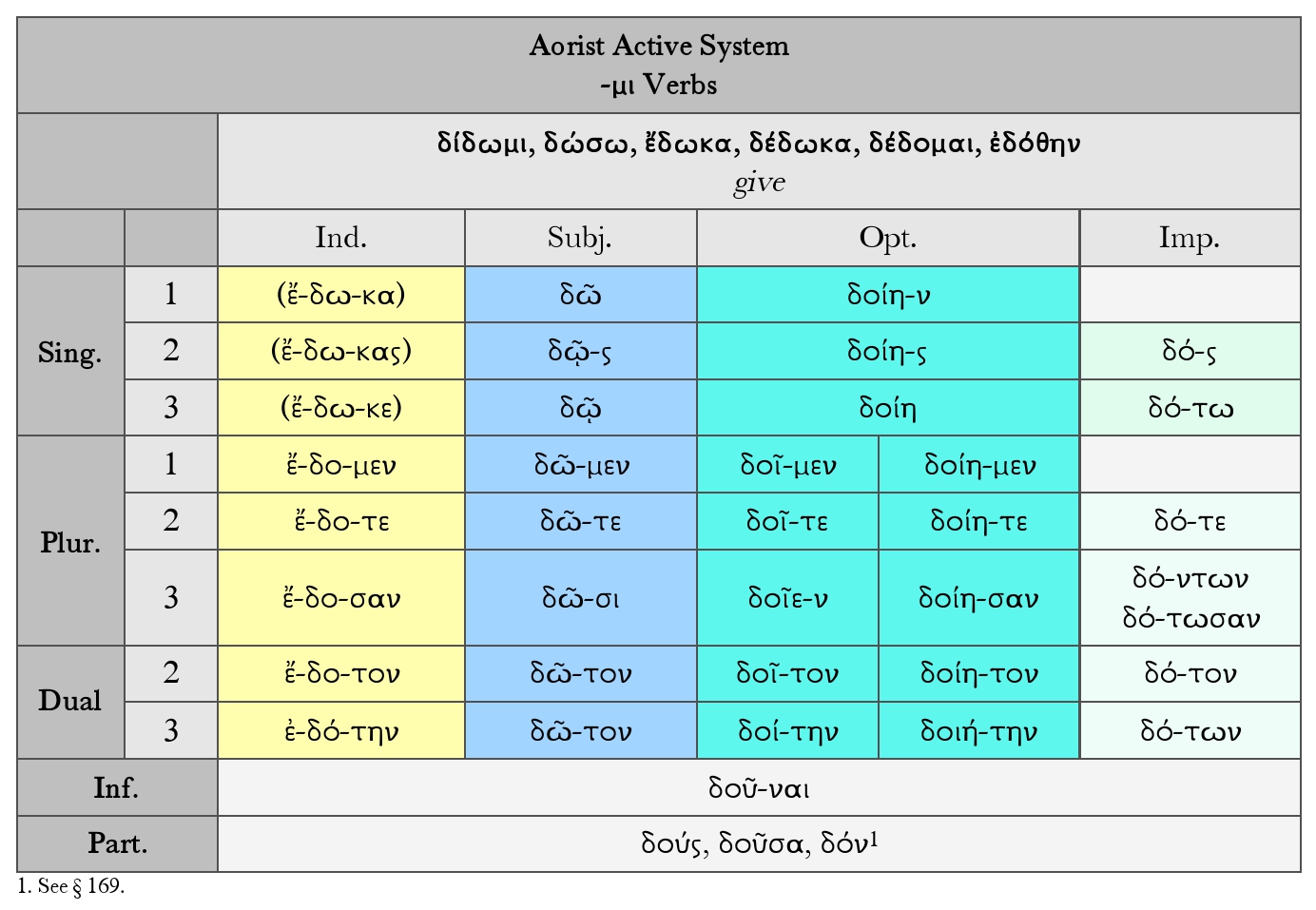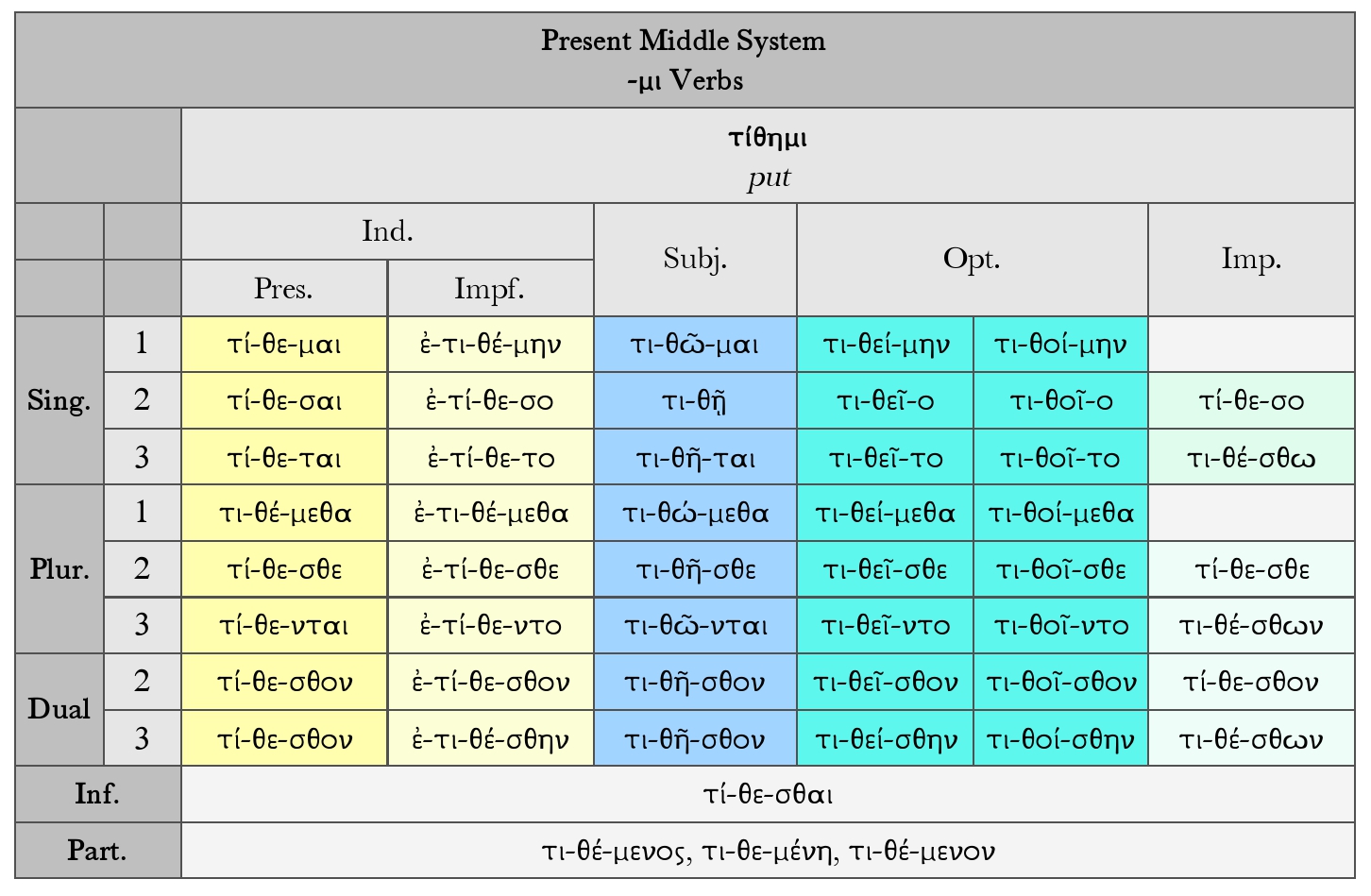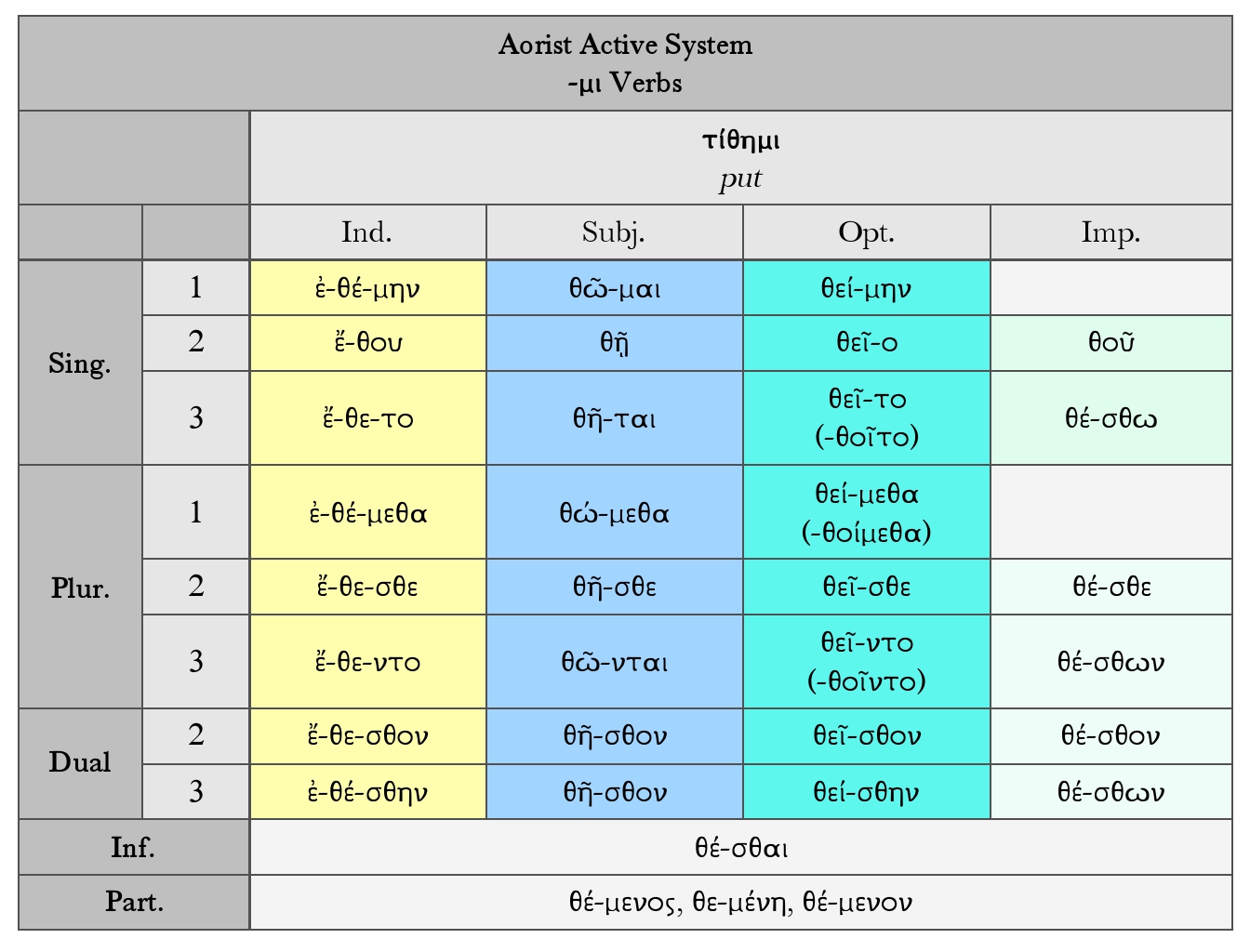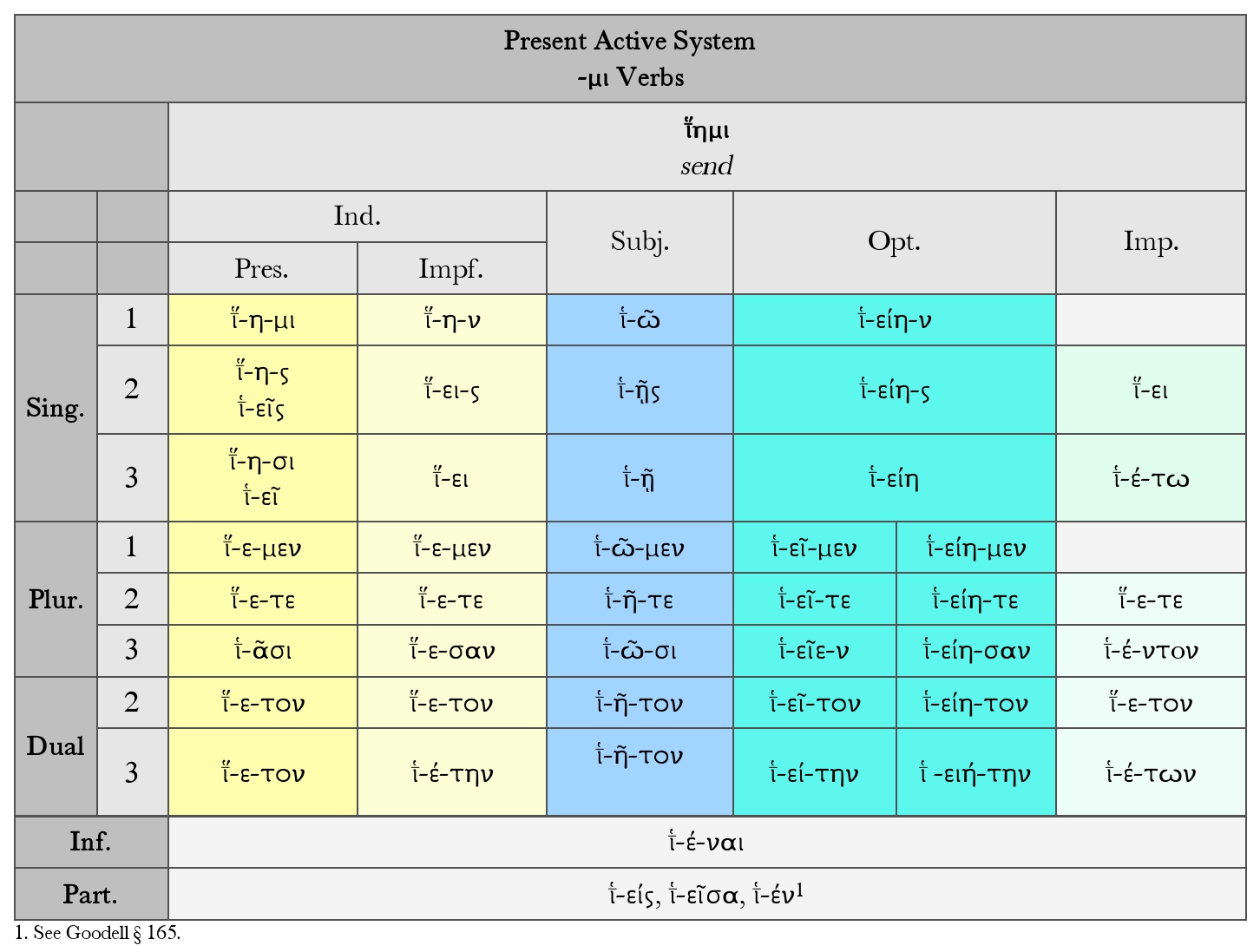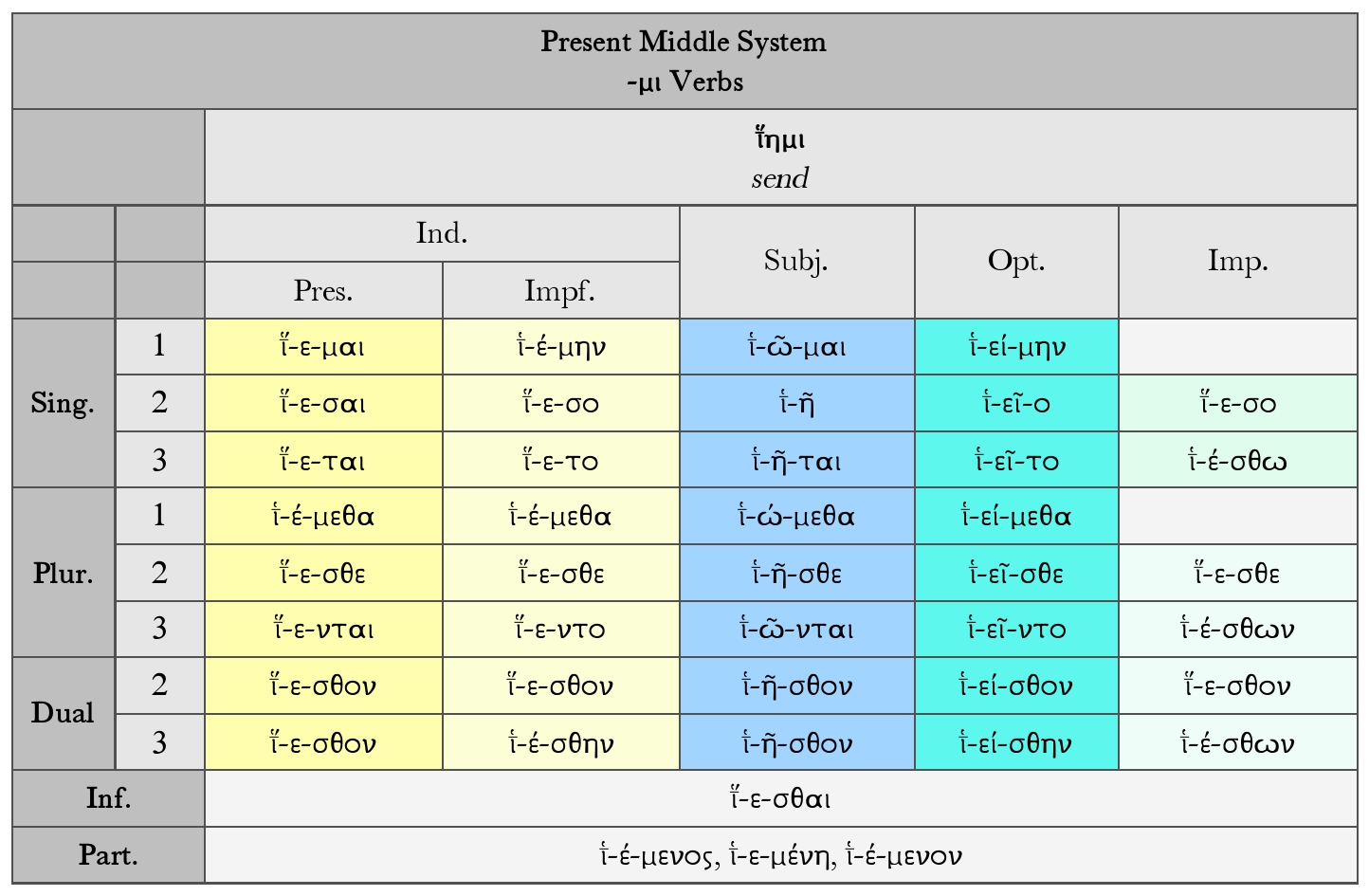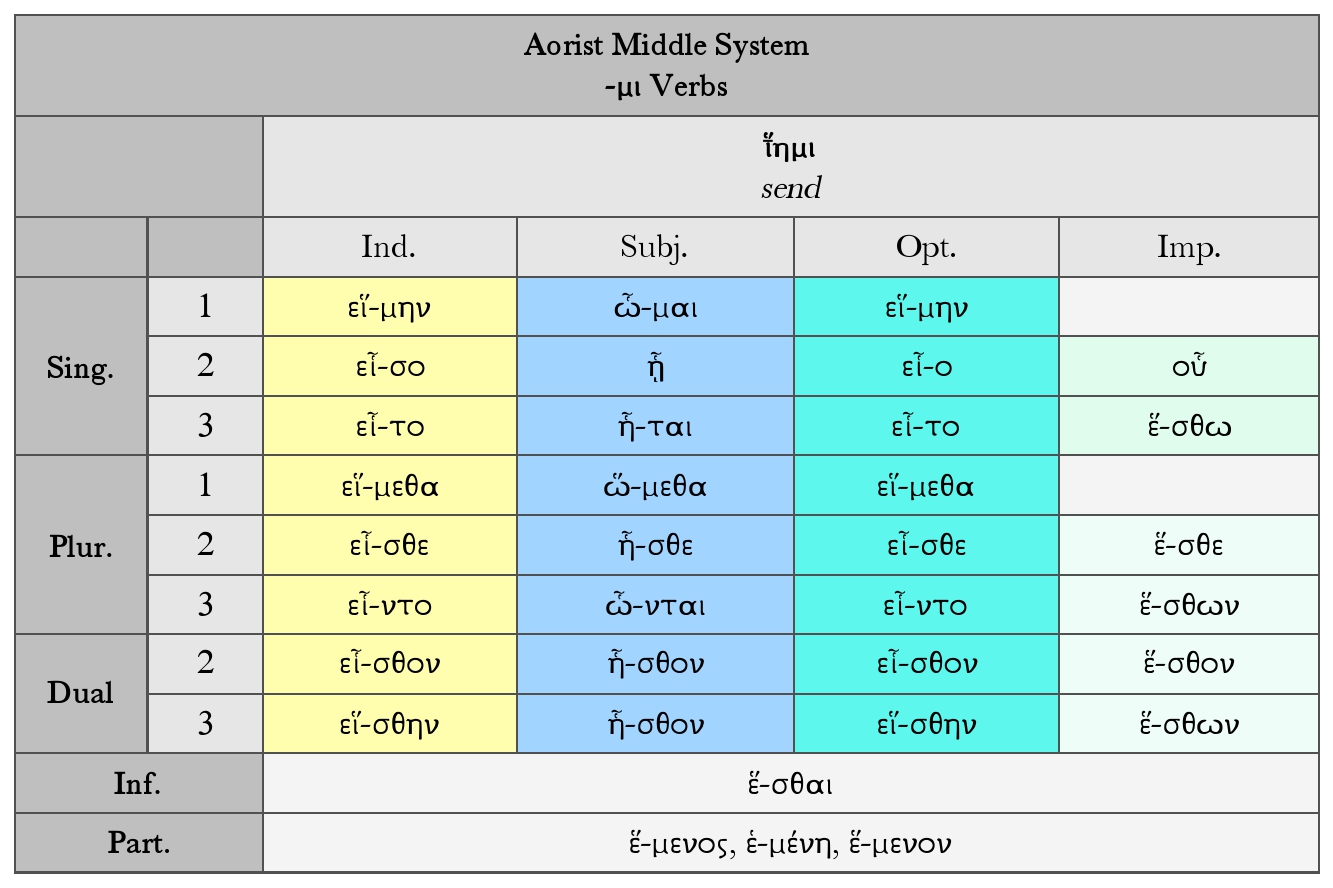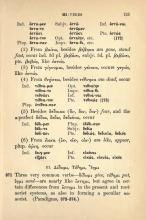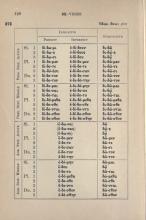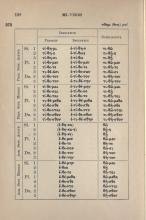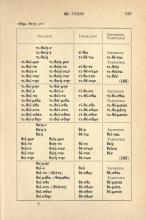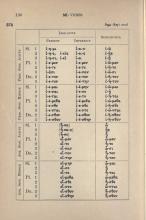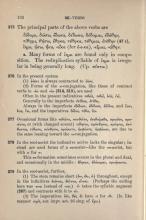371. Three very common verbs—δίδωμι (give), τίθημι (put), ῑ̔́ημι (send)—are nearly like ἵστημι, but agree in certain differences from ἵστημι in the present and root-aorist systems, as also in forming a peculiar κα- aorist. (Paradigms, §§ 372 – 374, below.)
375. The principal parts of the above verbs are as follows.
δίδωμι, δώσω, ἔδωκα, δέδωκα, δέδομαι, ἐδόθην
τίθημι, θήσω, ἔθηκα, τέθηκα, τέθεμαι, ἐτέθην (§ 47.c)
ῑ̔́ημι, ἥσω, ἧκα, -εἷκα (for ἑ-ε-κα), -εἷμαι, -εἵθην
a. Many forms of ῑ̔́ημι are found only in composition. The reduplication syllable of ῑ̔́ημι is irregular in being generally long. (Cp. πῑ́πτω)
376. In the present system
1. ῑ̔έᾱσι is always contracted to ῑ̔ᾶσι.
2. Forms of the ω- conjugation, like those of contract verbs in -έω and -όω (§§ 314 and 315), are used
—often in the present indicatives τιθεῖς, τιθεῖ, ῑ̔εῖς, ῑ̔εῖ;
—generally in the imperfects ἐτίθεις, ἐτίθει;
—always in the imperfects ἐδίδουν, ἐδίδους, ἐδίδου, and ῑ̔́ειν, ῑ̔́εις, ῑ̔́ει,
and the imperatives δίδου, τίθει, ῑ̔́ει.
377. Occasional forms like τιθοῖτο, συνθοῖτο, ἐπιθοίμεθα, προοῖτο, προοῖντο, or (with changed accent) τίθηται, πρόσθηται, πρόηται, ἐπίθωνται, τίθοιτο, σύνθοιτο, πρόοιντο, ἀμφίοιτε, ἀμφίοιεν, are due to the same leaning toward the ω- conjugation.
378. In the root-aorist the indicative active lacks the singular; instead are used forms of a κα- aorist- like the σα- aorist, but with -κ- for -σ-.
This κα- formation sometimes occurs in the plural and dual, and occasionally in the middle
ἔθηκαν
ἐδώκαμεν
προήκαντο
379. In the root-aorist, further,
1. The stem remains short (δο-, θε-, ἐ-) throughout, except in the infinitives δοῦ-ναι, θεῖ-ναι, εἷ-ναι. (Perhaps the ending here was -εναι instead of -ναι.) ἑ- takes the syllabic augment (§
2. The imperatives δός, θέs, ἕς have -ς for -θι. (In like manner σχές, aorist imperative active 2nd singular of ἔχω.)
3. The ending -σο after a short vowel generally drops -σ- and contracts.
4. Compounds of δός, θές, ἕς accent the penult: ἀπόδος. Compounded with a monosyllabic preposition δοῦ, θοῦ, οὗretain the circumflex; but they throw the accent back on a dissyllable.
ἐνδοῦ, ἀφοῦ, κατάθου
The infinitives δόσθαι, θέσθαι, ἕσθαι in composition retain the accent.
προσθέσθαι, προέσθαι

